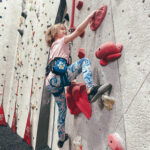Climbing with Children
Climbing with children can be an exciting and rewarding experience. It is an opportunity to introduce kids to a fun physical activity, provide an opportunity to build confidence by pushing through challenges, instill a love for the great outdoors, and foster a sense of adventure. However, it is important to approach climbing with children carefully and safely, taking into account their unique needs and limitations.
I have been climbing for over three decades and have introduced my children and grandchildren to the sport. Here are some tips and considerations for climbing with children:
Start small
It is important to start small and work your way up gradually. Choose easy climbs that are appropriate for your child’s age and ability level. Do not push them too hard or too fast, as this can lead to frustration and discouragement. They do not have to get to the top, although your more competitive kids will want to get there. Start by encouraging them to climb as high as they want and work up to higher, more challenging climbs as they gain confidence and experience.
Safety first
Safety should always be your top priority when climbing with children. Make sure that you have all the necessary safety equipment, including harnesses that fit well. Body harnesses for kids are best for smaller children. Follow the manufacturer’s guidelines for tying/clipping in. If you are venturing outdoors, be sure you have helmets for everyone and inspect the gear regularly. Be confident in your own outdoor skills when it comes to using the proper equipment, building anchors, site management or go with someone who is experienced. (Vertical Endeavors Guided Adventures or VEGA has expert guides. Join a group event or schedule a private guided trip). Teach your child how to properly use the gear and emphasize the importance of following safety procedures.
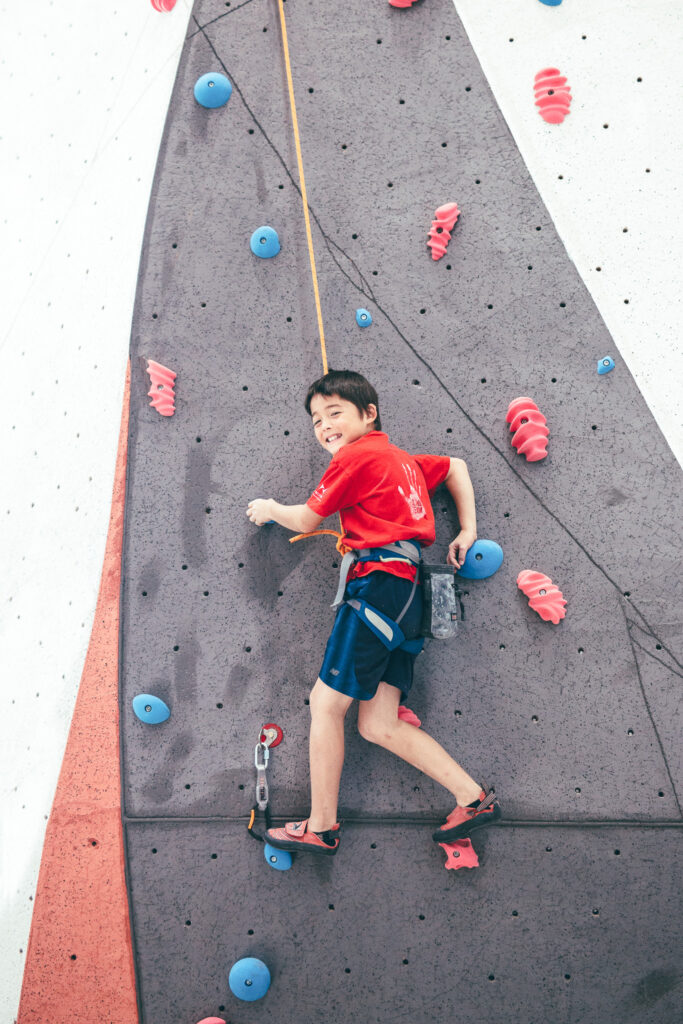
Choose the right location
Choose an indoor facility that is designed for younger climbers. There should be enough easier routes (5.7 and below) and having auto belay systems helps parents get several kids climbing at the same time. An outdoor location must be appropriate for children. Look for climbing areas that have easy access, a clear path to the base of the climb, and a safe area from which to belay. Look for places where they cannot venture into dangerous situations when they are not climbing. Consider the weather conditions and avoid climbing in extreme heat or cold.
Plan ahead
Before going to the indoor climbing facility or heading out on a climbing trip with your child, plan ahead and make sure you have everything you need. This includes your climbing equipment, food, water, sunscreen, bug spray, and any necessary medications. Having plenty of snacks and water is also a necessity. Make sure you have a plan for emergencies and know how to get help if needed.
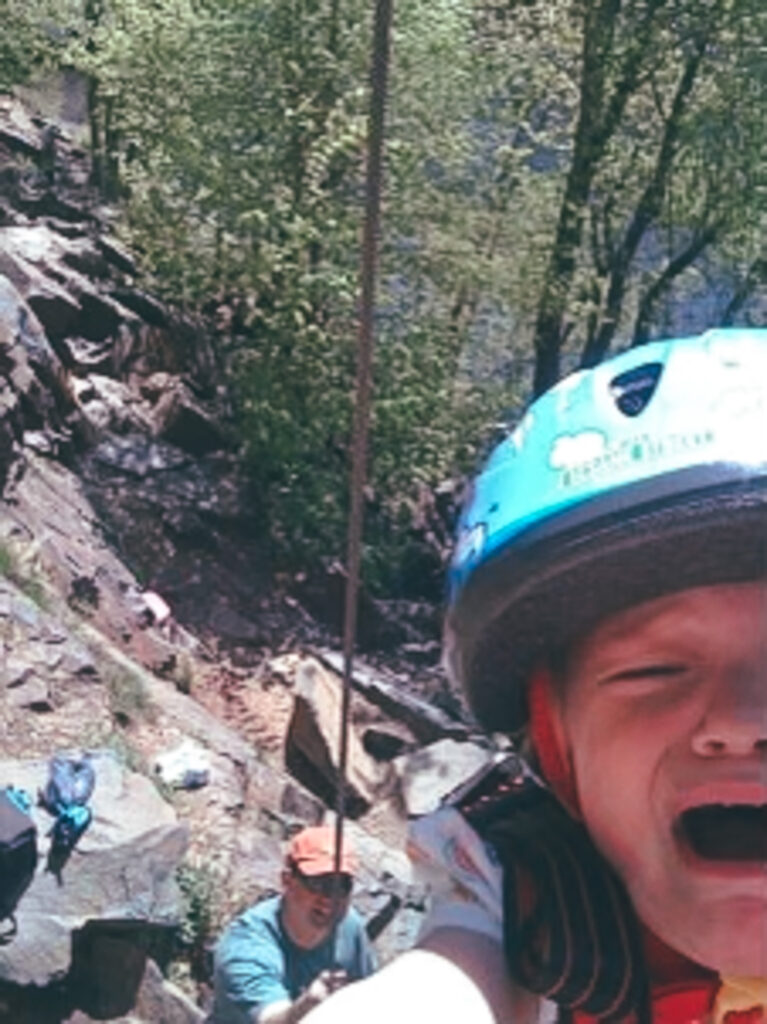
Set realistic expectations
Set realistic expectations for your child and yourself. Don’t expect your child to climb as well as you or to enjoy every aspect of the activity. Every child is unique and has their own set of likes, dislikes, skills, and abilities. Be patient and understanding, and let your child set the pace. Remember that the goal is to have fun and enjoy the adventure. If you take them climbing outdoors, one might be focused on climbing and the other looking for worms. That’s okay!
Teach good climbing habits
Teach your child good climbing habits, such as staying aware of their surroundings, using proper technique, good communication, following all the safety precautions, and taking breaks when needed. Emphasize the importance of respecting others and the natural environment. Teach them to be responsible, pick-up after themselves, and to leave no trace behind whether that is indoors or outside. Encourage your child to develop a love and respect for adventure and the outdoors.
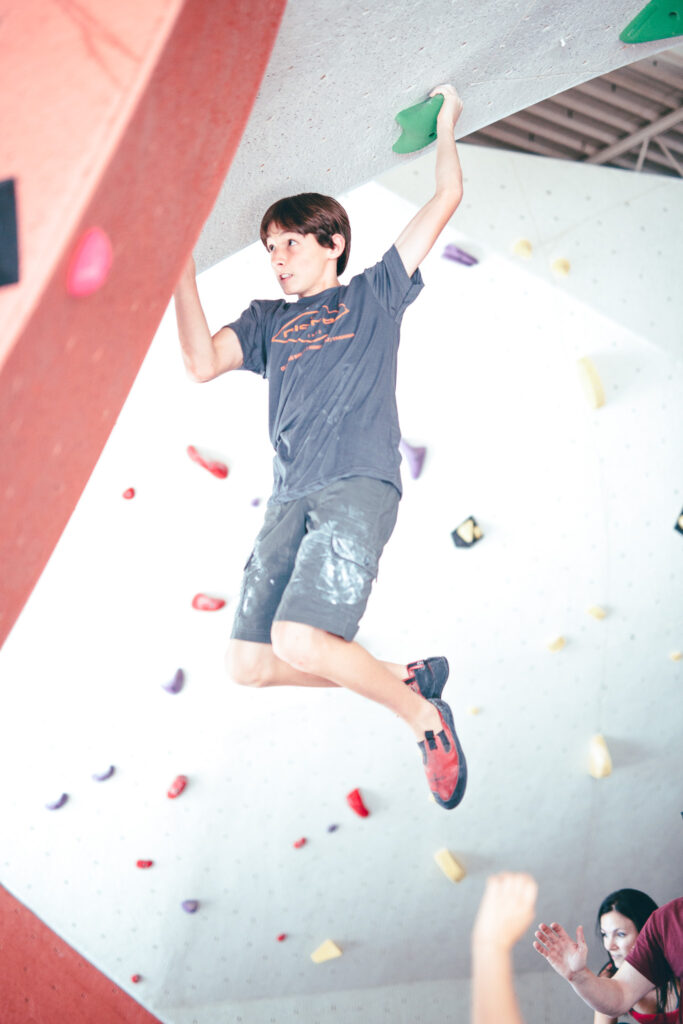
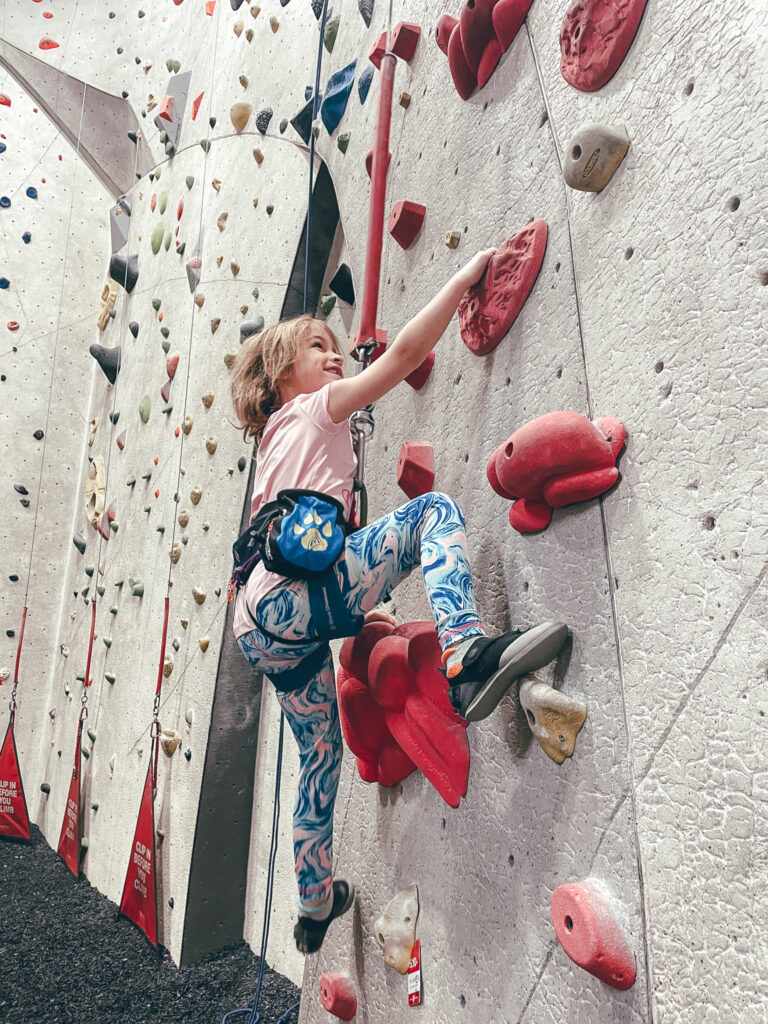
Have fun
You can have a safe and enjoyable climbing experience with your child. Climbing can be a great way to bond with your kids. It can introduce them to the joys of indoor and outdoor adventure. They have a chance to develop important physical and mental skills, such as strength, endurance, problem-solving, and resilience.
Here are some additional tips for climbing with children:
- Properly supervise your child, younger children will need constant supervision.
- Make them aware of the dangers in climbing, but do not frighten them.
- Make sure your child is properly hydrated and has enough food to fuel their body.
- Dress your child in comfortable and appropriate clothing, such as athletic shorts or pants and a breathable shirt.
- Rental gear, Hand-me-down harnesses, and borrowed equipment are readily available. Always inspect climbing equipment for wear before using it. If your child loves the sport and wants to participate regularly, the investment in properly fitted equipment is worthwhile.
- Consider taking a climbing class or workshop with your older child to learn proper techniques and safety procedures. Sign them up for Climbing Camps during school breaks or consider having them join a Climbing Club or Climb Team.
- Have simple first aid supplies with you and know how to use it in case of an emergency.
- Be prepared to adapt your plans if necessary. If your child is feeling tired or uncomfortable, it is okay to take a break or end the climb early.
- Encourage your child to take breaks and rest when needed. Climbing can be physically demanding, and it is important to listen to your body and take breaks when necessary.
- Stay positive and encourage your child to keep trying, even if they struggle at first. Remember that climbing is a process.
Climbing is a sport that can be enjoyed by the young and old alike. It is an activity that parents and kids can participate in together. Children can sometimes have parents “climbing the walls!” Why not bring them in and everyone can climb our walls together!
Climbing is dangerous, it involves inherent and other risks and cannot be eliminated. The information presented here does not describe all of the risks associated with climbing and is not intended to replace or supersede expert instruction and training.
© 2023 Vertical Endeavors, Inc. All rights reserved. The contents of this article, photographs, and graphical representations are protected by U.S. and International copyright laws. Reproduction and distribution, in part or whole, without written permission from Vertical Endeavors are prohibited. The opinions and information contained in this article are for entertainment and informative purposes. They are those of the author and may not represent those of Vertical Endeavors, and do not necessarily reflect the ideas, ideologies, opinions, or points of view of the organization, affiliates, owners, stockholders, partners, suppliers, licensors or staff. Under no circumstances shall Vertical Endeavors or any entity that are, have been, or will be affiliated be liable for any indirect, incidental, consequential, special, or exemplary damages arising out of or in connection with the information contained in this article.

